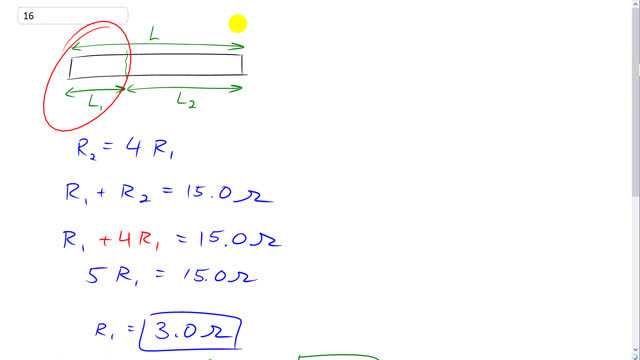
A certain copper wire has a resistance of . At what point along its length must the wire be cut so that the resistance of one piece is 4.0 times the resistance of the other? What is the resistance of each piece?

In order to watch this solution you need to have a subscription.
This is Giancoli Answers with Mr. Dychko. Here's a piece of copper wire and it's broken into two pieces. It has a total length of L but it's broken into two pieces where one is length L one and the other piece has length L two. And we know that the resistance of this second portion is four times the resistance of the first portion. And we know their total resistances, R one plus R two, is gonna be 15 ohms. So we can substitute for R two and write four times R one in its place. And we end up with five times R one equals 15 ohms, or divide both sides by five, and you get R one as 15 over five which is 3.0 ohms. The resistance of part two is gonna be four times the resistance of part one, so that's four times 3 ohms which is 12 ohms.
how would you find the length of the short wire?
Hi kniffin.1, thanks for spotting that I missed that part. I'll try to fill the gap with a typed answer. Since and we're told that and . We can re-write that in terms of length by substituting for each resistance: . All the common factors cancel leaving . So the total length of the wire is five times that of the first segment, or written another way after dividing both sides by 5: or . The short wire is 20% of the total length of the wire.
Hope that helps,
Mr. Dychko